- Our
experience in Gangtok, Lachung Valley (North Sikkim) and Fambong Lho Wildlife
Sanctuary. We also loved the natural views/walks and flowers.
Bundled
with glaciers, meadows, monasteries and never-ending sceneries is the serene
Sikkim! The road journeys are
mesmerizing filled with snow clad mountains and breathtaking views.
This northern east state is bordered with Nepal, Bhutan and Tibet. Sikkim is bounded by Great Himalayan Range and houses the Mount Khangchendzonga, the third highest peak in the world (Kanchanjunga) having summit of 8586 m. Civilians can reach the Indo China Border at Nathu La and Zero Point. The state lies in the heart of the Himalayas with altitudes varying from 5,600 feet in Gangtok to 28,000 feet in the peaks. We visited in the month of August.
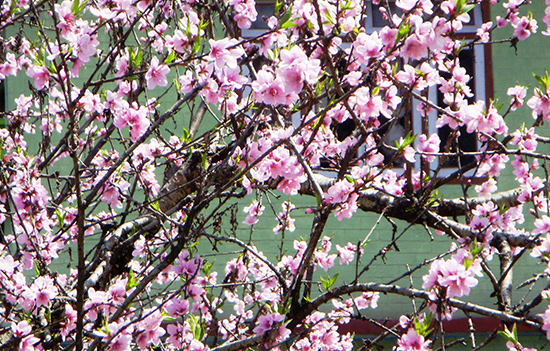 Azaleas flowers enroute from Siliguri to Sikkim. They belong to Rhododendron genus and are native to Himalayan region.
Azaleas flowers enroute from Siliguri to Sikkim. They belong to Rhododendron genus and are native to Himalayan region.
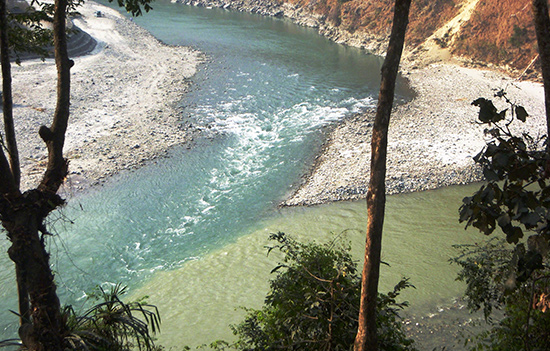 Teesta river enroute Kalimpong. River Rangeet with its deep green crystal-clear water meets Teesta at a point called Triveni.
Teesta river enroute Kalimpong. River Rangeet with its deep green crystal-clear water meets Teesta at a point called Triveni.
Sikkim
is nestled with wildlife like Himalayan tahr, blue sheep, clouded leopard and
state animal red panda to name a few. Sikkim is the main catchment area for
river Teesta which is the largest in Sikkim and second largest in West Bengal
having its source in the pristine Cho Lhamu Lake in North Sikkim region.
One
can see the forests of Sal, Deodar, Pine and Cedar covering most of the road
journeys. Bhutia, Lepcha and Nepali the three languages spoken in Sikkim as
most of the population are descendants of Tibet and Lepcha people.
Someone has truly said—"Journeys are more important than the destination” it fits apt for Sikkim and we really felt it during this trip as we stopped our vehicle all the time to take photographs on all cliffs and turns till the driver explained importance of travel time…
North
Sikkim has two main places for tourists namely Lachen and Lachung. You can do
either or both depending on the number of days on hand and what you are looking
for
Day 1
Our
trip began from Mumbai flying to Bagdogra (West Bengal) followed by a picturesque
road journey to the Sikkim capital Gangtok. We chose a home stay in warm
ancient wooden log house to get a real rustic touch. Evening time was for a visual
treat at Gangtok market which had a shopping area of local produce and Tibetan handicrafts
accompanied by eateries which serve/sell apricot jam, butter tea, thukpa, momos,
chhurpi and gundruk.
Day 2
Early
morning 6 am the homestay staff took us to a beautiful morning walk close by.
It was the Fambong Lho Wildlife Sanctuary in Gangtok district which is a part
of the Khangchendzonga National Park. We spotted some birds like laughing
thrush, partridge and some babblers. This sanctuary has bamboo, fir- oak
forests, rhododendrons and broad leaf with many trekking points and small
hamlets like Dikchu, Pangthang and Mangan. The sound of the trees and birds
gave us a fresh feeling to begin our day. The home stay had a beautiful view of
snow clad Kanchangunja mountain welcoming us with golden sunrays.
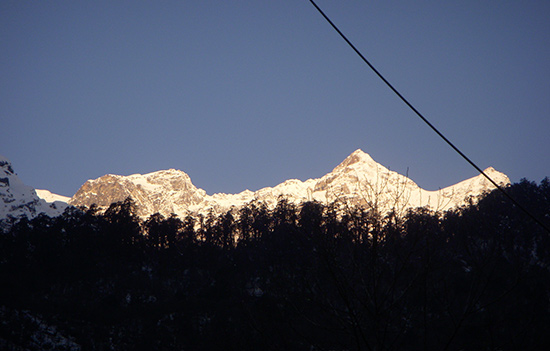 Kanchanganga Mountains 5.30 am view from Lachung village.
Kanchanganga Mountains 5.30 am view from Lachung village.
In
Gangtok we visited Rumtek Monastery which is the sect of Tibetan Buddhism and a
replica of Tsurpu monastery in Tibet. A meandering drive through villages and
chilling breezes took us to Rumtek monastery which is 25 km away from Gangtok.
This holy place exhibits rarest artistic objects of Buddhism found in the
world.
Himalayan
Zoological Park is just 3kms from Gangtok which is definitely a place for
wildlife enthusiasts and is the first zoological park in Sikkim. Best time to
visit is from February to May and September to December. Some of the animals
seen in the zoo were Pheasants, Himalayan civet, Himalayan Monal and Red Panda.
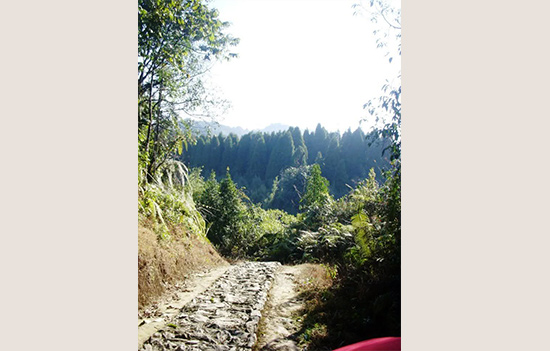 Fambong Lho Wildlife Sanctuary is a 51 km large wildlife sanctuary.
Fambong Lho Wildlife Sanctuary is a 51 km large wildlife sanctuary.
 Singharey goats
are found around Sikkim. Pic during morning walk in Famboong Sanctuary.
Singharey goats
are found around Sikkim. Pic during morning walk in Famboong Sanctuary.
Day 3
After
Gangtok we had a four-hour journey to Lachung (North Sikkim). We stayed at Lachung village (means a small mountain) which is
remote and completely submerged in nature. This tiny village is at the Tibetan
border and confluence of Lachung and Lachen rivers both being tributaries of Teesta.
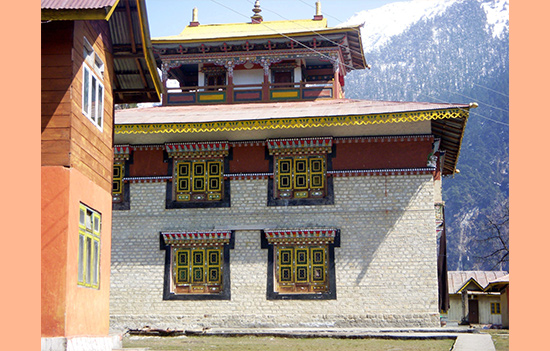 View of Buddhist Monastry in Lachung valley.
View of Buddhist Monastry in Lachung valley.
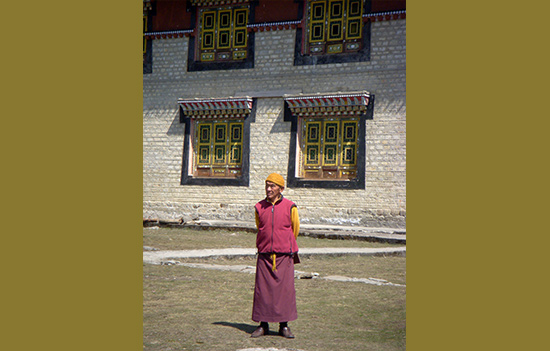 Monk seen in the Buddhist Monastry which is a Buddhist gompa established in 1880.
Monk seen in the Buddhist Monastry which is a Buddhist gompa established in 1880.
It
is home to Lachung monastery and surrounded by beautiful apple orchards, pine
forest and Rhododendrons. It is known for being the base camp for the Rhododendron
Valley Trek which starts from the Yumthang Valley and ends in the Lachen
Valley.
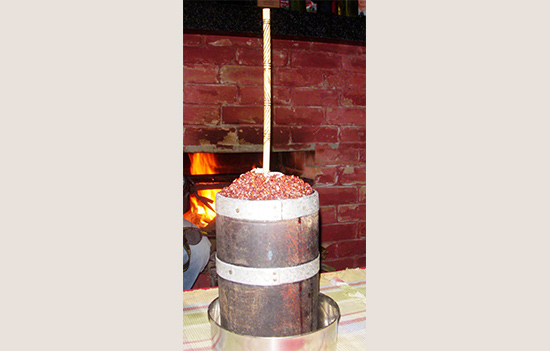 Chaang traditional achoholic beverage brewed here.
Chaang traditional achoholic beverage brewed here.
A
typical village day begins early and ends early as sun sets at 5.30 pm. Every
evening the home stay locals served us chaang,
traditional alcoholic drink which is prepared by fermented process mostly made
up of rice, millet barley and wheat. Usually, it tastes like ale keeping the body warm similar to beer having light
alcoholic content. To our excitement we experienced snowfall in Lachung which
enhanced the beauty of the village making it a wonderland.
Day 4
We
had a 6.5 hr long yet wonderful drive from Lachung to Darjeeling (West Bengal)
and visited Himalayan Mountaineering Institute, Padmaja Naidu Himalayan
Zoological Park, toy train ride and experienced the tantalizing tea smell from
the tea estate enroute.
Though
this was a short Sikkim tour if you have spare time or your flight back is late
one can visit Darjeeling with quick important site seeing as we did. Heading to
Bagdogra airport from Darjeeling in just 2.5 hrs we ended our Sikkim tour with
unforgettable memories.
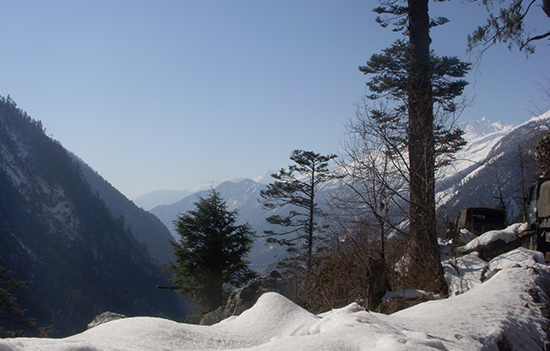 Enroute to Yumthang Valley from Gangtok, Chungthang road.
Enroute to Yumthang Valley from Gangtok, Chungthang road.
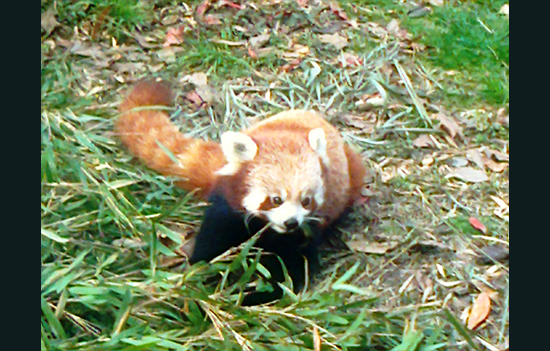 Himalayan Zoological Park, Red Panda state animal of Sikkim
Himalayan Zoological Park, Red Panda state animal of Sikkim
Some more places to visit:
1.
Shingba Rhododendron Sanctuary is home to the endemic Rhododendron niveum, is
the State tree of Sikkim.
2. Gurudongmar Lake located in Greater Himalayas it’s one of the highest lakes in the world with 5430 m. Its considered sacred by Sikhs and Buddhist.
3.
Yumthang valley is also called as Valley of Flowers sanctuary having floral
beds, hot springs, yaks and grazing pastures.
4.
Nathula Pass connects towns of Kalimpong and Gangtok. This is part of the trade
routes of the British Empire during the 19th and early 20th century.
5. Tsonmgo Chho is a glacier lake also known as Changu lake situated in Gangtok district. It’s a restricted area as it’s a border trade market and permissions are required to visit.
6.
Kanchenjunga National Park is a biosphere reserve marked as UNESCO World
Heritage Site
Sikkim’s cultural life reflects Tibet influences which are derived from tribes from Sikkim and pre-Buddhist customs.
7.
Phanglhapsol is a two-day festival which takes place in August or September
where masked dancers perform in honour of Kanchenjunga, the presiding deity.
Climate
Sikkim exhibits a climate of tropical conditions in the southern regions to harsh climates in the north. Temperatures in January (the coldest month) in Gangtok can drop as low as 30s F (about 0 °C); and in August (the warmest month) the temperature is like 80s F (about 28 °C). Heavy snow fall and rainfall can cause avalanches and landslides. Tourist visit Sikkim between October and May.
Connectivity
Gangtok
being the capital of Sikkim is nearly 75 miles (120 km) from the nearest
airport, at Bagdogra, and 70 miles (110 km) from the railhead at Siliguri, both
are in West Bengal.
There
is no need to fix or angle your camera as each nook and corner is filled with
heavenly beauty just take a random shot anywhere and it will turn to a frame!
Indian Himalayas are truly an abode to explore; it reflects its richness of
biodiversity, touch of culture and the nectar of tourism.
Few facts
1.
State has banned plastic water bottles & is known as the most
environmentally conscious state.
2. Regarded as the cleanest state after winning the “Cleanest State” title in 2016.
3.
In 2016, Sikkim also declared itself as a fully organic state.
4.
It has more than 200 monasteries; Rumtek and Phodong being the most famous ones.
5.
Known for its flora and fauna, as 20% of the state is covered with forest.
6.
Sikkim homes the second highest population of Gurkhas.
7.
Sikkim grows one of the hottest Chillies in the world.
8.
Sikkim has the highest number of glaciers with a whopping number of 84.
References
1.http://sikkimforest.gov.in/Reports%20and%20Publications/Biodiveristy-of-Sikkim/1%20Biodiversity_1-12%20web.pdf
2.
https://www.britannica.com/place/Sikkim
3.
https://sikkim.gov.in/aboutus/sikkim-at-a-glance
4.https://unacademy.com/content/railway-exam/study-material/general-awareness/a-quick-guide-to-facts-about-sikkim/
5.https://gangtokdistrict.nic.in/tourist-place/rumtek-monastery/#:~:text=Situated%20around%2023%20kms%20from,villages%20and%20many%20paddy%20fields.
To read all
Travelogues and Yatras
Also read
1.
Best
of Sikkim in 5 days
2.
Album
Gurudongmar Lake
3.
Album Gangtok and
around
4.
Album
Monasteries of Sikkim